Research Article
Volume 1 Issue 3 - 2017
Relation of Mother’s Knowledge About Dental and Oral Health Care with Kindergarten Student’s Dental Caries Status (Kusudarsini Kindergarten, Makassar, Indonesia)
Department Dental Public Health, Faculty of Dentistry, Hasanuddin University, Makassar, Indonesia
*Corresponding Author: Ayub Irmadani Anwar, Department Dental Public Health, Faculty of Dentistry, Hasanuddin University, Makassar, Indonesia.
Received: June 20, 2017; Published: July 22, 2017
Abstract
Dental caries is one of the most frequent tooth decay experienced by pre-school children so as to interfere with their growth process. Maintenance instructions for oral health in the home has been made by experts. The program emphasizes the prevention of caries. The participation of parents is necessary in guiding, giving understanding, reminding, and provide facilities to the children so that children can maintain the cleanliness of the teeth and mouth. One factor that acts to prevent caries in children is parental knowledge about dental treatment. This is the basic for the formation of the child's behavior to perform dental work properly. This research is observational analytic cross sectional study. The purpose of this study was to determine the relation of mothers' knowledge of dental and oral health care and dental caries status of students at Kusudarsini Kindergarten in Paccerakang street, YPPKG, Biringkanaya Makassar. Research subjects consisted of kindergarten students who attended and participated in the study and returned a questionnaire study, in order to obtain 33 children. Pearson correlation test is used to see the correlation between the variables mother's knowledge about dental and oral health care with dental caries status of children. Correlation between the mother's knowledge and the value of df-t, r = -0.263 obtained and p = 0.133, which means there is no statistically significant relationship between knowledge of mothers with dental caries status of children.
Keywords: Knowledge; Oral health; Dental caries
Introduction
Health is important in everyday life, to get the generation of a strong nation. Besides health also aim to increase awareness, willingness and ability of healthy life in order to realize public health optimal.
The mouth is the first gate in the digestive system. Food and beverages will be processed in the mouth with the help of the teeth, tongue, and saliva. Maintenance of oral hygiene is one way to improve health. The mouth is not just for the food and beverage entrance but functions mouth over it and not many people realize the magnitude of the role of the mouth to the health and well-being of a person. Therefore, oral health plays an important role in supporting health seseorang. [1]
Research on dental caries in children aged 1-3 years in Iran stated that caries prevalence was higher in children who have parents with low education, whereas in children who have highly educated parents, caries prevalence tends to be lower. These results are also influenced by the level of knowledge and health maintenance parents on dental health and oral children. [2]
Research shows that many mothers do not know how to prevent caries in their children. In 1998, Hood CA., et al. identified that 26.7% of mothers of children 5 years and under who bring their children for dental extractions under general anesthesia to dental school, does not know how to prevent dental caries in children them. [3]
Maintenance instructions for oral health in the home has been compiled by experts. The program emphasizes the prevention of caries. Because there are many parents who think that milk teeth are only temporary and will be replaced by permanent teeth so that they do not pay attention to the cleanliness of the milk teeth. [3]
The participation of parents is necessary in guiding, giving understanding, reminding, and provide facilities to the children so that children can maintain the cleanliness of the teeth and mouth. In addition parents also have a significant role in preventing the accumulation of plaque and caries in children. Knowledge of parents is very important in the formation of the underlying behaviors that support or do not support the oral hygiene of children. Such knowledge can be obtained naturally or are planned that through the educational process. Parents with low knowledge about oral health is a predisposing factor of behavior that does not support oral health. [4]
Definition of pre-school children by Biechler and Snowman (1993) are those between the ages of three to six years. That age they usually follow the pre-school education programs. Pre-school children in Indonesia, generally follow the Daycare program (TPA), Play Group (KB), and follow the program Kindergarten (TK). Basically pre-school education program in Indonesia be divided into three parts, namely pre-school education program of formal, non-formal, and informal. [5]
According Notoatmodjo (2003), knowledge (knowledge) is the result of human know that simply answering the question "What". Knowledge is the result of the idea, and it occurred after the conduct of sensing towards a particular object. Sensing, smell, taste, and touch. Knowledge or cognitive domains that are very important in shaping a person's actions (overt behavior). [6]
One of the most tooth decay in children is dental caries. Dental caries is a multifactorial disease that involves chronic vulnerability teeth, cariogenic microflora, and the oral environment. The process of demineralization of dental hard tissue which is then followed by the destruction of organic elements can lead to bacterial invasion, the death of the pulp and periapical infection spread, causing pain. [7]
Factors that education is the second largest factor of socio-economic factors that influence attitudes toward knowledge, and behavior of a person to live a healthy life, so hopefully someone who has a higher level of education were able to have a good knowledge and attitudes about health. And it would be nice to share with people who studies low level, and requires more information. [8]
According to Vincent Iannelli MD, author of The Everything Father's First Year Book and Associate Professor of Pediatrics at UT Southwestern Medical Center Dallas, United States, the most appropriate time to bring the child to the dentist based on recommendations of the American Academy of Pediatric Dentistry, which is when the child has a first tooth or no later than age one years. [9] Awareness of parents to bring their children to consult is still considered low. This is evident from the number of cases of child to the dentist if a problem has occurred, for example, when a child's cheek was swollen from broken teeth. This step is less wise. [10]
Maintenance instructions for oral health in the home has been compiled by experts. The program emphasizes the prevention of caries. Because there are many parents who think that decidui teeth are only temporary and will be replaced by permanent teeth so that they are not concerned about dental decidui hygiene. According to psychologists the age of the child consists of several levels, namely age infants, children, pre-school, school, and teens. Several approaches to implementing a behavior and habits can be applied to each of these groups. Knowledge of dental professionals about children's behavioral development is essential in maintaining dental health program implementation and mouth. [1]
The purpose of this study was to determine the relationship of mothers' knowledge of oral health care by dental caries status in kindergarten pupil Kusudarsini. The hypothesis of this study is that there is a relationship between mothers' knowledge of oral health maintenance with caries status of children.
Materials and Methods
The study was observational analytic cross sectional study. The study was conducted in kindergarten Kusudarsini Biringkanaya District of Makassar on October 29, 2016. Study population that is elderly (mother) and kindergarten pupils Kusudarsini Biringkanaya Makassar District of as many as 42. Inclusion criteria that all students in kindergarten Kusudarsini present and willing to be examined, whereas the exclusion criteria that students who do not return the questionnaires that had been filled by his mother. The study begins with oral health education and after that proceed to the examination of the state of dental students and after the students were given a questionnaire to take home and completed by their mothers. so we get as many as 33 pupils study subjects.
Definition Operational:
- Knowledge of the parents (in this case the mother), which is an understanding of the parents:
- The cause of dental caries. Cause cavities which plays an important role is the plaque.
- Sweet foods can cause caries.
- Vegetables and fruits are beneficial for dental health of children.
- The right time to brush your teeth twice a day in, each after breakfast and before sleeping at night.
- Know how to brush teeth properly.
- By using the rinse water after eating reduces the risk of caries.
- Teeth that have holes may be maintained by way of patched.
- Dental health of children should be controlled at least every 6 months to the dentist.
- Caries, the disease calcified dental tissue and is caused by the work of microorganisms on carbohydrates and followed by decalcification of the inorganic part and the organic component breakdown of the tooth.
- Status of caries, a condition that describes a person's caries experience index is calculated with DMF-T or def-t.
Assessment of dental caries status was assessed using def-t index and classification according to WHO, is to count the number of primary teeth undergo d (damage due to caries), e (repealed because of caries), f (patched due to caries), where: [11]
- d = decayed/damaged/number of carious teeth that can still be patched
- e = Exfoliate/indication for revocation/number of primary teeth that have been lost or must be revoked because of caries.
- f = Filled/patchwork/number of primary teeth were patched on the surface that there is no dental caries.
In this study, researchers did not use the components in the index Exfoliate def-t because of the difficulty obtaining information from students about the cause of the loss of their primary teeth.
For the average index of df-t according to the WHO used the formula:
WHO gives a category in the calculation of a degree of def-t interval as follows:
Very low = 0.0 to 1.1, Low = 1.2 to 2.6, Moderate = 2.7 to 4.4, Height = 4.5 to 6.5, Extremely high = > 6.6. [12]
Very low = 0.0 to 1.1, Low = 1.2 to 2.6, Moderate = 2.7 to 4.4, Height = 4.5 to 6.5, Extremely high = > 6.6. [12]
Assessment of knowledge of mothers using a questionnaire containing 8 questions with answers in Likert scale (score 2 = know, score 1 = less know, a score of 0 = do not know) and if the total score is obtained: less: if the total score of 0-5, enough: if the total score of 6-11, good: if the total score of 12-16. [9]
This questionnaire has previously been used by Dwi., et al. for use in research on the relationship of education, knowledge and behavior of mothers towards their babies at playgroup caries status and BKIA located in Medan, Medan Selayang districts. [8]
Data analysis using Pearson's correlation test to examine the relationship between the two variables. Primary data, which are presented in tabular form, and processed with SPSS 16.
Results
This research was conducted in kindergarten Kusudarsini located at Complex Paccerakang YPPKG (Office Employees Housing Foundation governorate), District Biringkanaya Makassar of Indonesia. The research was conducted on October 29, 2016, where the number of samples that follow the examination at the time of the study were 33 children.
| Characteristics of the study sample | Frequency (n) | Percent (%) |
| Gender | ||
| Man | 15 | 45.5 |
| Women | 18 | 54.5 |
| Age | ||
| 4 years | 3 | 9.1 |
| 5 years | 26 | 78.8 |
| 6 years | 4 | 12.1 |
Table 1: Distribution of research subject characteristics.
Table 1 shows the distribution characteristics of the study subjects. Overall obtained 15 (45.5%) children of male respondents and 18 (54.5%) of the children of female respondents. Children with the age group 5 (78.8%) (54.5%) of the children of female respondents. Children with the age group 5 (78.8%) at most the number of 26 children and the least in the age group 4 (9.1%) in the number of 3 children.
| Gender and Age | n | Categories of Mother's Knowledge | Total | ||
| Good | Enough | Less | |||
| Gender | |||||
| Man | 15 | 14 (42.5%) | 1 (3.0%) | 0 (0%) | 15 (45.5%) |
| Women | 18 | 16 (48.4%) | 2 (6.1%) | 0 (0%) | 18 (54.5%) |
| Age | |||||
| 4 years | 3 | 2 (6.1%) | 1 (3.0%) | 0 (0%) | 3 (9.1%) |
| 5 years | 26 | 24 (72.7%) | 2 (6.1%) | 0 (0%) | 26 (78.8%) |
| 6 years | 4 | 3 (9.1%) | 1 (3.0%) | 0 (0%) | 4 (12.1%) |
Table 2: Distribution of maternal knowledge categories by gender and age of child.
Table 2 shows the distribution of maternal knowledge categories based on the child's gender and age of the child. By gender, boys with good maternal knowledge category is a total of 14 children (42.5%) and boys with mothers knowledge category is pretty much as 1 child (3.0%). Mother daughter good knowledge categories are as many as 16 children (48.4%), whereas mothers with sufficient knowledge categories are as much as 2 children (6.1%). By age group, children with mothers who either category knowledge more widely available at the age of 5 years the number of 24 children (72.7%), whereas mothers of children with sufficient knowledge category is more prevalent at age 5 by 2 children (6.1%).
| Gender, age, and mother's knowledge | n | Value d | Value f | Value df-t |
| Mean ± SD | Mean ± SD | Mean ± SD | ||
| Gender | ||||
| Man | 15 | 6.31 ± 4.61 | 0.00 ± 0.00 | 6.31 ± 4.61 |
| Women | 18 | 5.50 ± 3.74 | 0.00 ± 0.00 | 5.50 ± 3.74 |
| Age | ||||
| 4 years | 3 | 2.00 ± 2.00 | 0.00 ± 0.00 | 2.00 ± 2.00 |
| 5 years | 26 | 6.23 ± 3.72 | 0.00 ± 0.00 | 6.23 ± 3.72 |
| 6 years | 4 | 7.25 ± 6.94 | 0.00 ± 0.00 | 7.25 ± 6.94 |
| Mother's knowledge | ||||
| Good | 30 | 5.83 ± 4.15 | 0.00 ± 0.00 | 5.83 ± 4.15 |
| Enough | 3 | 6.25 ± 4.57 | 0.00 ± 0.00 | 6.25 ± 4.57 |
Table 3: Distribution of the average value of d, f, and df-t by gender, age, and maternal knowledge.
Table 3 shows the distribution of the average value of d, f, and df-t by sex, age, and knowledge of the mother, where the boys had an average value of caries is still active and has not been addressed (d) higher than children women is equal to 6.31 with a standard deviation 4.61. Also obtained an average value of dental caries children who are still active and have not been addressed (d) in the age group of 6 years with the largest average value of 7.25 with a 6.94 standard deviation and the average value of the smallest are at the age of 4 years with an average rating 2.00 with a standard deviation of 2.00. The average value of dental caries children who have not received treatment (d) based on the knowledge largest respondent mother knowledgeable enough with the average value with a standard deviation of 4.57.
| Categories of Mother's Knowledge | n (%) | The Value of Mother's Knowledge | Value df-t | p-value | The correlation coefficient (r) |
| Mean ± SD | Mean ± SD | ||||
| Good | 30 (88.2) | 14.70 ± 1.022 | 5.83 ± 4.15 | 0.563 | -0.103 |
| Enough | 4 (11.8) | 9.75 ± 1.893 | 6.25 ± 4.57 | ||
| Total | 34 (100) | 14.12 ± 1.966 | 5.88 ± 4.13 |
*Pearson correlation test: p < 0,05, signifikan
Table 4: Correlation value of knowledge of mothers with dental caries status of children.
Table 4: Correlation value of knowledge of mothers with dental caries status of children.
In Table 4 shows the correlation between the mothers' knowledge of oral health care by dental caries status of children as measured by the value of df-t. Correlation between the mother's knowledge and the value of df-t, obtained values of r = -0103 and p = 0.563, which means there is no statistically significant relationship between mothers' knowledge of oral health care by dental caries status of children in which any increase in the value of knowledge mother followed by a decrease in the value of df-t of 10.3%.
Discussion
In this study analyzed the relationship of maternal knowledge about the maintenance of oral health with dental caries status of children in kindergarten Kusudarsini Biringkanaya District of Makassar, Indonesia. Mother's level of knowledge known through questionnaires by mothers of children and caries status assessed by indices df-t.
Based on the knowledge of a group of mothers, children whose mothers are known knowledge good dental health, the more the number of 30 children (88.2%). Where knowledge is based on knowledge of mothers about the picture caries, caries causing foods, the benefits of vegetables and fruits in preventing caries, the perfect time to brush teeth, how to brush teeth properly, the benefits of gargling after eating to prevent the incidence of caries, dental treatment caries with fillings, as well as control your child's teeth when the dentist.
Based on the average value of df-t, known to the average df-t the subject of the study was 5.88 with a standard deviation of 4132 which means that the average child has teeth that need to be patched, or revoked and the revocation or indication by 5 teeth.
In Table 2 girls look good with mothers more knowledgeable than boys. But the number of children whose mothers are knowledgeable enough to have a comparable number of men and women.
In Table 3 boys have an average value of df-t lower the amount of 7.12 and the girls that is equal to 8.11. This is consistent with the results of the study Susi, Hafni Bachtiar, Umm Al-Azmi, [13] and also Priyantha Perera J., et al. [14] which states that the prevalence of caries in primary teeth was higher in girls than boys. This is caused by the first tooth eruption girls than boys teeth. This is also consistent with the results of the study Shilpi Singh., et al. which states that the average value of deft girls is higher than the average deft son laki. [14]
DMF-T value was higher in girls may be explained by several factors. Teeth erupt earlier in girls than boys because girls have more time exposed to cariogenic material in the oral environment, the relationship of women pregnancy and hormonal influences also affect their oral cavity. There are differences in the biochemical composition of saliva and salivary flow rate in girls and boys laki. [15]
By age group, children aged 5 years had an average value of df-t higher at 8.23. Seen an increase in the average value of df-t with age. This is in line with research Susi., et al. which states that caries prevalence increases with age, which most recently erupted teeth are more susceptible to events karies. [12]
Based on the knowledge of the mother, it can be seen that children whose mothers have knowledgeable good average value is lower df-t is equal to 7.40 compared to the average value of df-t child who has a mother who is knowledgeable enough at 9.50. This is consistent with the results of the research Suresh BS., et al. which states that the oral health of children associated with maternal oral health knowledge, oral health-related habits (such as related to oral hygiene and diet) are formed during infancy and early childhood was maintained throughout. Parents, especially mothers, into the lead role for children mereka. [16] This is also consistent with the results of the study Saied-Moallemi Z., et al. which states that the better knowledge of the mother, the lower the average values def-t anak. [17] Seen also that the average child has none of caries and fillings that do care. According Lindawati SK, Until today many parents found cavities or caries in primary teeth do not need to be treated, except the permanent teeth of children affected by caries should be treated as new milk teeth will be terganti. [18]
From the results of Table 4 is based on the analysis of the data showed that the coefficient of correlation exists between the average value of the knowledge of mothers with an average index value of df-t at -0103, found an association between maternal knowledge about the health status of teeth with caries in their children even though the results obtained was not statistically significant. The table shows that any increase in maternal knowledge, a decline in the value of df-t of 10.3 %. From the above, it can be seen that the two variables have a correlation that is enough. This is consistent with the results of the research Priyantha Perera J., et al. stating that the children of mothers with low levels of knowledge and education have a high prevalence of caries and the children of mothers with the highest educational level of knowledge and has a prevalence terendah.14 Castilho, et al. mother stated that caries experience and knowledge of dental health affects the oral health of their children. This confirms the important role of parents, especially mothers, to develop values and positive behaviors in their children about dental health and Mouth. [19]
Conclusions and Recommendations
Conclusion
Based on the research that has been conducted on students in kindergarten Kusudarsini Paccerakang Road Complex YPPKG (Office Employees Housing Foundation governorate), District Biringkanaya Makassar of Indonesia, it can be concluded that there is no significant relationship between mothers' knowledge of health care teeth and mouth with dental caries status of children. Based on the correlation coefficients obtained, the negative correlation coefficient indicates that there is a relationship which is inversely between mothers' knowledge of oral health care by dental caries status of children. The better the pattern of mother's knowledge, the value of df-t would be lower.
Based on the research that has been conducted on students in kindergarten Kusudarsini Paccerakang Road Complex YPPKG (Office Employees Housing Foundation governorate), District Biringkanaya Makassar of Indonesia, it can be concluded that there is no significant relationship between mothers' knowledge of health care teeth and mouth with dental caries status of children. Based on the correlation coefficients obtained, the negative correlation coefficient indicates that there is a relationship which is inversely between mothers' knowledge of oral health care by dental caries status of children. The better the pattern of mother's knowledge, the value of df-t would be lower.
Suggestion
Parents should be able to understand about the knowledge and attitudes about oral health of their children and to get children to the dentist. It is expected that there is more research on other factors that may affect the presence or absence of dental caries in pre-school children.
Parents should be able to understand about the knowledge and attitudes about oral health of their children and to get children to the dentist. It is expected that there is more research on other factors that may affect the presence or absence of dental caries in pre-school children.
References
- Riyanti E. “Introduction and Child Care Dental Health Early. Main Clinical Laboratory Pramita”. Journal of Pediatric Dentistry New York: The son of DentistrFaculty of Dentistry, Padjadjaran University, 2005.
- Mohebbi SZ., et al. “Early Childhood Caries and Dental Plaque among 1-3 years old in Tehran, Iran”. Journal of the Indian Society of Pedodontics and Preventive Dentistry 24.4 (2006): 177-181.
- Akpabio A., et al. “Mothers/Guardians' Knowledge about Promoting Children's Oral Health”. Journal of Dental Hygiene 82.1 (2008): 1-2.
- Christiono S. “Importance of Children's Dental Health In Early Childhood”.
- Anonymous. Definition of Pre- school Children
- Ahyan S. Definition of Knowledge., 2012.
- The Selvie., et al. “Relationship of Parental Knowledge Level Indonesia Blimbing district of Malang”.
- Dwi and Silvana N. “Relationship Education, Knowledge and Behaviour Mother Against Caries Status in District Medan Selayang toddler., 2010”.
- Pelita Medika. Dental Care from Dental Milk.
- Anonymous. Indices used for the assessment of dental caries.
- Tirahiningrum P., et al. “Brushing pattern of relationships with DMF-T Index In Grade Students in Elementary School Vi NU ( Minu ) Nadla'ul Ulum Blimbing district of Malang”.
- Susi., et al. “Socioeconomic status Parents with Eldest Dental Caries in Children Ages 4 And 5 Year”. Andalas Medical Magazine 36.1 (2012): 98-104 .
- Perera PJ., et al. “Prevalence of dental caries among a cohort of preschool children living in Gampaha district, Sri Lanka: A descriptive cross sectional study”. BMC Oral Health 12.49 (2012): 1-6.
- Singh S., et al. “Prevalence of Early Childhood Caries among 3-5 Year Old Pre-schoolers in schools of Marathahalli, Bangalore”. Journal of Dental Research 9.6 (2012) : 710-714.
- Ali LM. “A pilot study on the oral health knowledge of parents related to dental caries of their children - Karachi, Pakistan”. Department of Public Health and Clinical Medicine Epidemiology and Global Health Umeå University Sweden
- Suresh BS., et al. “Mother's Knowledge about Pre-School Child's Oral Health”. Journal of Indian Society of Pedodontics and Preventive Dentistry 28.4 (2010): 282-287.
- Moallemi ZS., et al. “Influence of Mothers' Oral Health Knowledge and Attitudes on Their Children's Dental Health”. European Archives of Paediatric Dentistry 9.2 (2008): 79–83.
- Suherni. “Threats Diseases Dental Caries in Pre- School Age Children”.
- De Castilho AR., et al. “Influence of Family Environment on Children's Oral Health a Systematic Review”. Jornal de Pediatria (Rio J) 89.2 (2013): 116-123.
Citation:
Ayub Irmadani Anwar. “Relation of Mother’s Knowledge About Dental and Oral Health Care with Kindergarten Student’s
Dental Caries Status (Kusudarsini Kindergarten, Makassar, Indonesia)” Oral Health and Dentistry 1.3 (2017): 172-179.
Copyright: © 2017 Ayub Irmadani Anwar. This is an open-access article distributed under the terms of the Creative Commons Attribution License, which permits unrestricted use, distribution, and reproduction in any medium, provided the original author and source are credited.













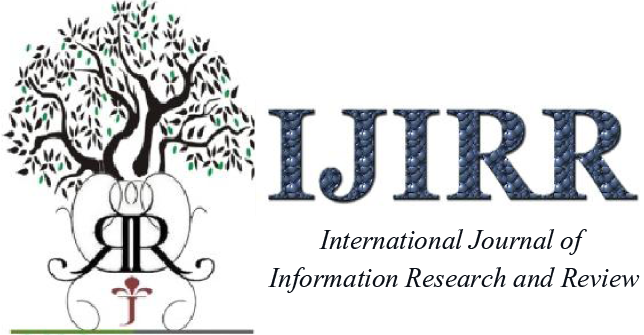



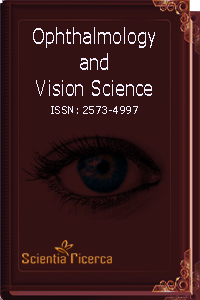
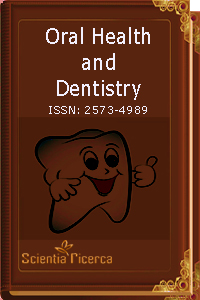
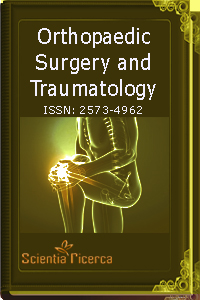

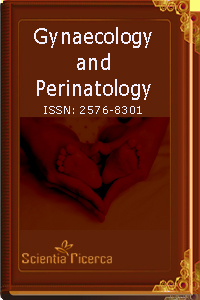
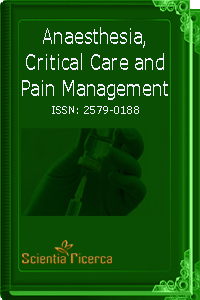
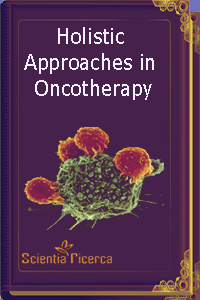
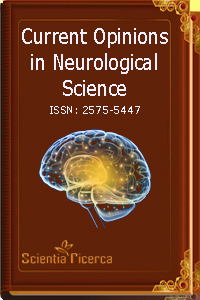
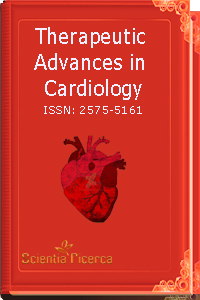
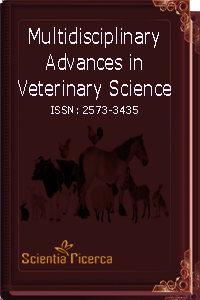
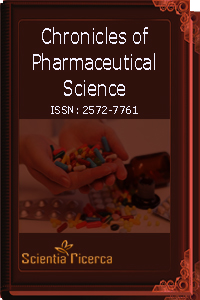
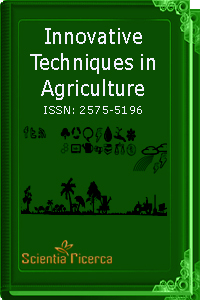

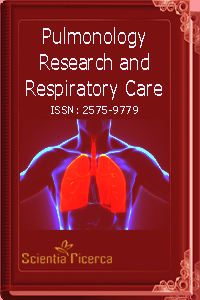
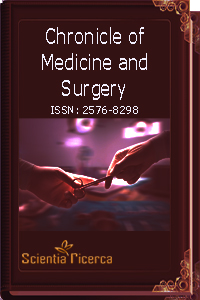
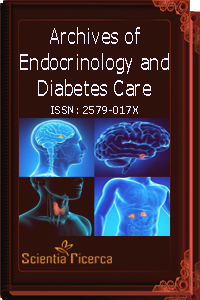

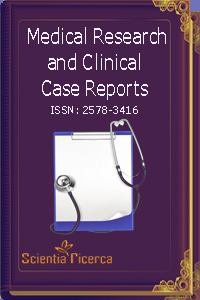

 Scientia Ricerca is licensed and content of this site is available under a Creative Commons Attribution 4.0 International License.
Scientia Ricerca is licensed and content of this site is available under a Creative Commons Attribution 4.0 International License.